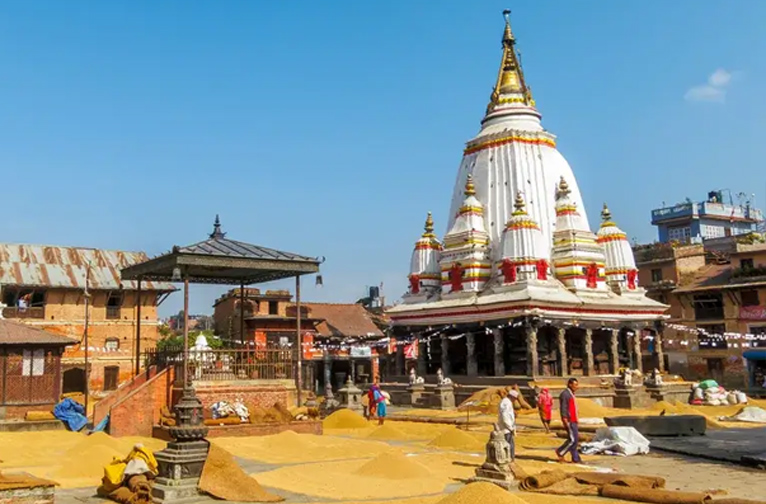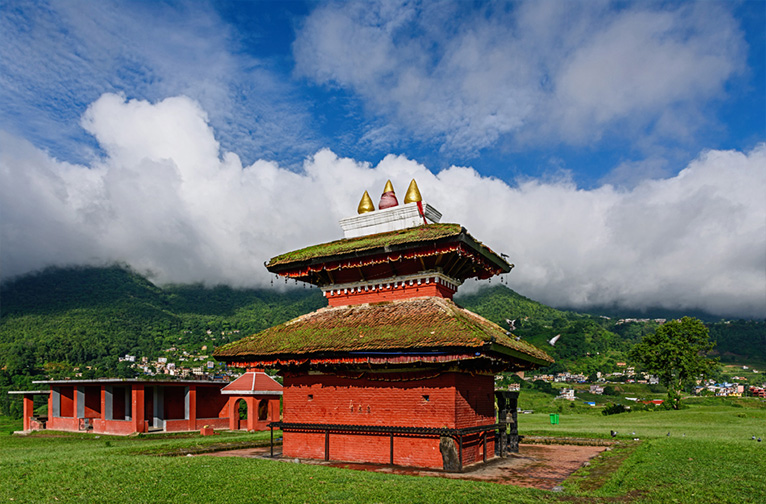Most travellers will have heard all bout Nepal being this tiny Hindu kingdom in the Himalayas. However, what’s interesting to note is that Buddhism is its second major religion and a magnet for Buddhist pilgrims from all over the world. Witnessing their presence at the several historically significant and sacred Buddhist stupas, Gompas, Chortens, and Monasteries, you will be surprised by the vibrancy of Buddhism as a living region and its rich contributions to Nepali culture.
Buddhism came early to Nepal. Its Nepal second most important religion. While it is notable as the birthplace of Lord Buddha, it is also speculated the Buddha himself might have visited the Kathmandu Valley. According to a Nepalese chronicle Emperor Ashoka also passed through Kathmandu Valley with his royal preceptor Bhikshu Upagupta during his stay in Nepal in the 3rd century BCE. Ashoka is said to have paid homage to Swayambhu Stupa, Guhyeshvari, and eight Vitaragas.
Other Great Buddhist Masters are said to have visited an played an important role in the development and dispersion of the religion in the valley. Amongst these were the likes of Vasubandhu (5th century CE), Santarakshita, Padmasambhava (8th century CE), Atisha Dipamkara Srijnana and Milarepa (11th century CE). Three schools of Buddhism flourish in Nepal: Theravada, Tibetan Vajrayana Buddhism and Newar Vajrayana Buddhism. The monasteries set up across Nepal by lamas of repute have become centres of Tibetan Buddhism.
Your journey on the Buddhist trail takes you through some of the most scenic and culturally rich destinations in the country. Kathmandu is good place to step into this enriching landscape. The 14th-century Bouddhnath, a leading pilgrimage point in the city, is famed as the world's largest Buddhist stupa. Scattered around it are a string of monasteries representing different sects of Tibetan Buddhism; one of these is home to a colossal statue of the Maitreya Buddha.


The Swayambhunath Stupa with its massive golden spire attracts a stream of devotees and tourists from around the world. Its importance as a pilgrimage site is said to date back to the 5th century. Take time to unravel the mystique and myths that surround this ancient devotional hub. The site is also held sacred by the Vajrayana Buddhists of northern Nepal and Tibet, and the Newari Buddhists of central and southern Nepal. Five Dhyani Buddha's with their consorts are enshrined at the base of the stupa. Hindus too come here to pay homage. The Harati Devi Temple is a fusion of the Hindu and Buddhist faiths. There is an abiding belief that Buddhists, who had no deity as a protector against small pox in their own pantheon, chose to adopt this Hindu deity for assistance.
In the historic city of Patan, rich in heritage and cultural delights set aside time to travel to the pretty villages of Bungmati and Khokana, just 5km away. The drive takes you past terraced rice fields of emerald hues, tranquil ponds and stunted undergrowth before bringing you to Khokana village and 3-storied temple dedicated to the mother goddess of nature, Rudrayani. Two other sacred spots visited by the locals are the Shekali Mai Temple and the De Pukhu pond. Khokana village is important for its unique drainage system and medieval mustard oil press. At Bungmati you get to meet artisans reputed for their skills at woodcarving. There’s a shrine here raised to the God of Rain, Rato Machhendranath.
The villages offer you a window to the cultural traditions of the Kathmandu Valley’s indigenous Newari community.
Back in Patan, spend time inspecting the four great stupas in four cardinal directions and one in Pimbahal near Patan Gate. Nepalese tradition reveal that they were commissioned by Emperor Ashoka himself.
Head for the Tibetan Singing Bowl & Healing Center for a session in sound healing using handmade Tibetan bowls. The vibrations of the bowls are believed to cure headaches, back pain, stress and insomnia.
A visit to the sacred little village of Namo Buddha is a pleasant experience. It is one of most sacred spots in the world for Buddhists. Legend has it that the Buddha in the guise of a prince met a hungry tigress with her cubs. The prince, without telling his brothers decided to sacrifice parts of his own body to appease their hunger so that they did not die of starvation. A stupa has been raised to commemorate this deed. Also known as Thrangu Tashi Yangtse Monastery the Namo Buddha monastery is a major pilgrim spot.
A legend has it that Lord Buddha after his enlightenment came to this spot in the Kathmandu valley with his desciples. It is here that he revealed to them the sacrifice he had made in an earlier incarnation and that his remains were enshrined here. Devotees come to pay homage and light lamps in veneration. Its a 3-4 hour hike to to Namo Buddha.
On should schedule another trip to spend a more leisurely time in the sacred spaces at Lumbini in ths Terai region. The province of Lumbini, is located in Southern Nepal. It is the birthplace of Lord Buddha, who started his life as the the son of King Suddhodana Tharu and Queen Maya of the prestigious Shakya clan. One can club a visit here with a trip to the goregous enviorns of the Chitwan National Park.